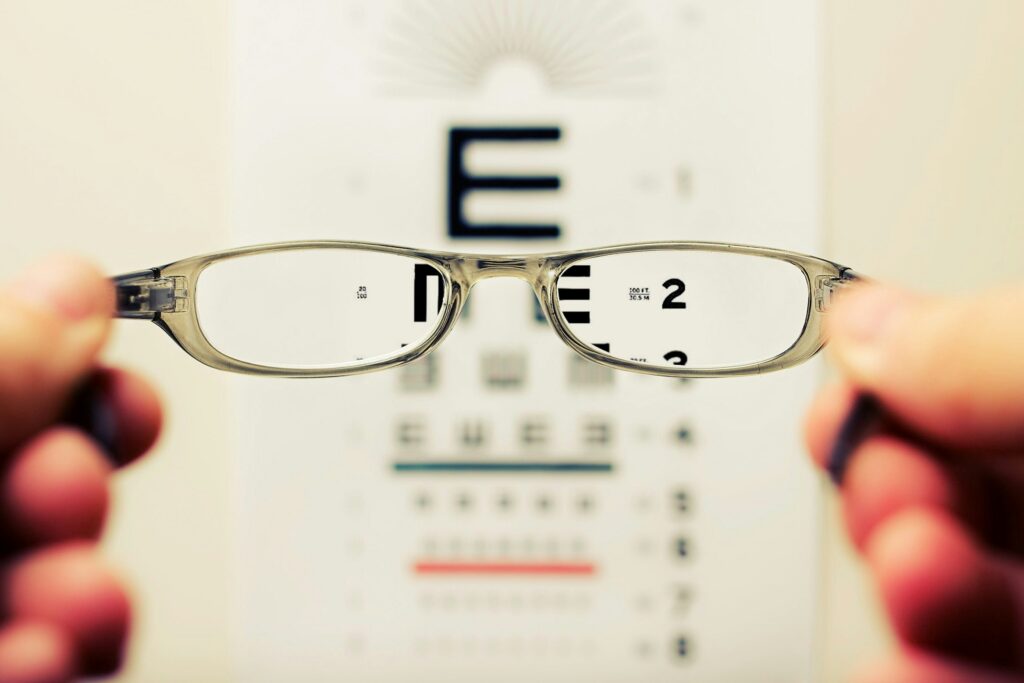
Menopause impacts a woman’s whole body. Reproductive changes may attract the most attention, but menopause can affect other bodily systems, too, like your eyes. Menopause and changes to your eyesight often go hand-in-hand, and more awareness can help you take better care of your eyes and recognize symptoms of menopause-related eye conditions early on.
Does menopause affect eyesight?
Estrogen, an essential reproductive hormone, begins to decline as a woman enters perimenopause and continues to decline postmenopause. Your cornea, the outermost layer of your eye, relies on estrogen to retain its thickness and flexibility. As estrogen levels fall, your cornea thins and becomes less elastic, which can affect your eye’s ability to focus light and cause blurred vision.
Estrogen also helps your eyes’ oil glands maintain moisture and produce tears. With lower levels of estrogen, women in perimenopause and postmenopause may experience reduced eye lubrication and, as a result, more dryness.
However, estrogen is not the only hormone that can impact eyesight during menopause. Androgens are male hormones that also decline during the menopause transition. New studies suggest that, though women have lower androgen levels than estrogen, the decrease in these male hormones can also reduce eye lubrication and cause dryness.
Menopause-Related Eyesight Conditions
Throughout the menopause transition, women may experience different eye conditions due to these hormonal fluctuations that may affect their eyesight.
Dry eye disease (DED) causes dryness, itchiness, and pain in the eyes and is one of the more common eye conditions among menopausal women. Declining estrogen levels can disrupt tear duct production, leading to general eye surface inflammation and dryness.
Glaucoma, a group of eye conditions characterized by eye pressure on the optic nerve, can start to develop during perimenopause. Estrogen helps protect the optic nerve, and as it declines, perimenopausal and postmenopausal women can become more susceptible. Symptoms of glaucoma most often appear as blurry peripheral vision. Research also suggests that women entering early menopause are at a higher risk of glaucoma.
While cataracts aren’t directly linked to menopause, they are more common among postmenopausal women. Symptoms like cloudy vision and sensitivity to bright light—common signs of cataracts—typically appear around age 60. So, while the connection remains up for debate, it’s clear that aging and hormonal changes may be key players in cataract development.
Unlike the above conditions, age-related macular degeneration (AMD) is not associated with the menopause transition, only the aging process. Common symptoms of AMD often include blurry central vision and blind spots. You may develop AMD, but it’s caused by abnormal blood vessel growth under the retina in the back of your eye and notchanging hormones.
Some people confuse symptoms of AMD and glaucoma, as they both cause blurry vision. However, AMD affects your central vision, making it hard to see things in the middle clearly. Glaucoma affects your peripheral vision, which makes it hard to see things on the sides.
Are eye floaters a symptom of menopause?
Eye floaters are small spots that appear to “float” in your vision. They’re typically caused by tiny clumps of cells on your retina. While eye floaters themselves are not tied to menopause, changes in hormone levels can affect the eye’s overall health and its structures. This can worsen any underlying conditions that can lead to the appearance of floaters. Eye floaters are generally harmless to your eyesight, but it’s important to get your eyes checked to rule out any underlying conditions.
How to Care for Your Eye Health During and After Menopause
If you’re experiencing any of the above symptoms or vision changes during menopause, treatment options are available to help you find relief and protect your eye health.
Regular eye exams are one of the most important things you can do for your eye health. A healthcare professional can help track vision changes, identify menopause-related eye conditions early, and detect and treat other chronic conditions, like type 2 diabetes.
Over-the-counter medications like artificial tear eye drops and lubricating eye gels can help alleviate dry eye symptoms. However, use them with caution and stop if you experience more irritation.
You can also take an active lifestyle approach to managing your eye health before, during, and after the menopause transition. Try to identify any irritating allergens, like dust and pollen, and keep your air vents clean. It’s also helpful to protect your eyes from bright sunlight and harsh winds, which can dry them out further.
If you spend a lot of time on your phone or a computer, take breaks to give your eyes a rest. You may also want to purchase blue light glasses to give your eyes an extra layer of protection. A healthy diet can also help support your eye health. In particular, make sure to add foods rich in omega-3 fatty acids and vitamin A to your meals.
Some conditions may require prescription medication, such as those that can reduce eye inflammation or help stimulate tear production. LASIK surgery helps correct your corneas’ shape and can also improve vision changes due to the menopause transition. However, eye doctors do not recommend LASIK for women with chronic eye dryness.
If you notice any significant vision changes or experience growing eye discomfort, make an appointment with your healthcare provider. They can help to identify any underlying conditions and prescribe proper treatment.